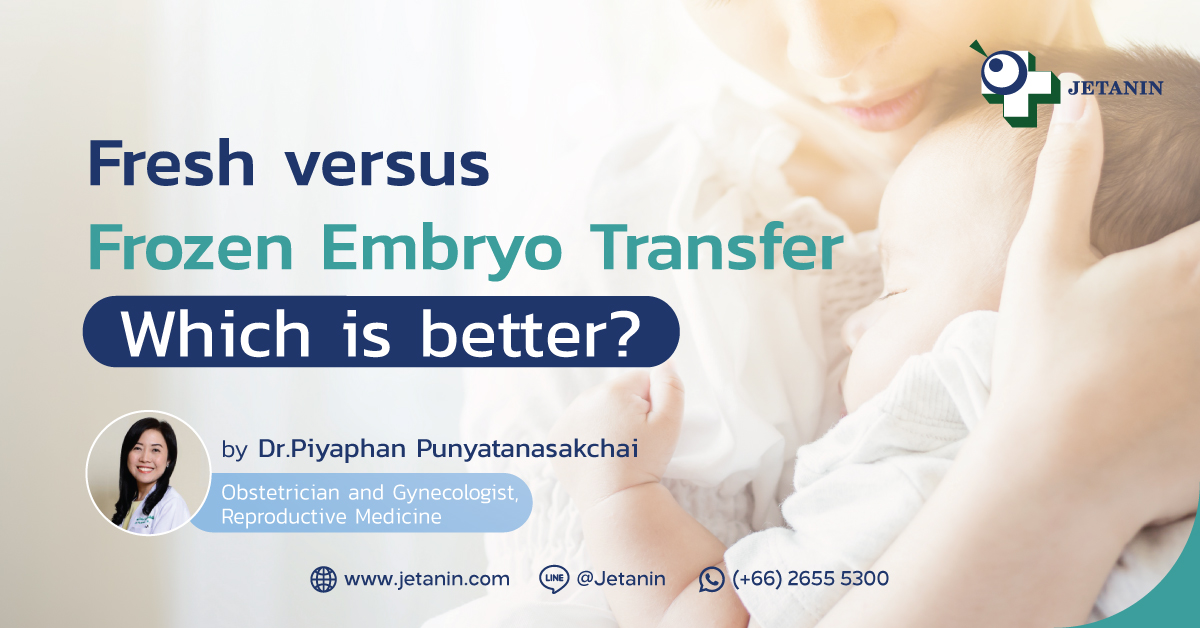
An embryo transfer is the last part of the in vitro fertilization (IVF) process. There are two types of embryo transfers that doctors can perform:
Type 1 – Fresh embryo transfer
Fresh embryo transfer is where the embryo transfer is done in a cycle where eggs are stimulated and retrieved. This type of transfer is done after ovum retrieval and fertilization with sperm. The next step in this process is letting the embryos develop for a period of 5-6 days and reach the blastocyst stage. If by then the embryo is strong and growing well, the doctor will make an appointment with the patient to transfer the selected embryo into the uterus.
Type 2 – Frozen embryo transfer
Frozen embryo transfer passes through two stages. First is the endometrial preparation stage and the second is the process of planting the embryo in the uterine lining. Preparation of uterus also has two methods and they are:
1. Use of Natural Cycles. In this method, the doctor first estimates the date of natural ovulation and then calls in the patient for an ultrasound examination to determine the size of the eggs. The doctor also does blood tests and hormone levels checks. Then, the doctor makes an appointment 5-6 days after the ovulation for embryo transfer. In this process, the doctor does not need to prescribe large amounts of hormonal drugs because the fertilized egg produces hormones on its own in the natural cycle.
2. Preparation of endometrium using drugs. In this method, the uterine lining is thickened by using estrogen-containing drug for 12 to 14 days. After the uterine lining achieves appropriate thickness, progesterone shall be given for 6 days. This allows the doctor to set the embryo transfer date at their convenience. The patient will not have egg growth in this cycle because of the use of medication for endometrial preparation. Also, this method requires continual usage of medication until about 10 weeks of pregnancy because all pregnancy hormones come from medication and are not produced naturally.
Which type of embryo transfer is the best option?
Fresh embryo transfer not only saves time but couples can also save money spent especially on freezing and thawing of embryos. One disadvantage of fresh embryo transfer is that, as studies found, live embryo transfer has lower pregnancy success rate than frozen embryo transfer. This is because there is a stage in the stimulation cycle where egg hormones are much higher than normal and egg stimulating drugs may adversely affect the endometrium. This is the reason why currently embryo transfers are mostly done frozen, including egg stimulation and embryo transfer in a continuous process. Also, it may increase the risk of ovarian hyperstimulation in some females. Therefore, doctors resort to frozen embryo transfer to mitigate this problem.
Frozen embryo transfer is also suitable for couples who desire screening the embryo for chromosomal abnormalities before implantation in order to increase their chances of pregnancy success and decrease the miscarriages from embryo chromosomal abnormalities
Nevertheless, a suitable embryo transfer for you will depend on your doctor’s diagnosis and your physical health, which may be determined by factors such as embryo quality, number of embryos, the appearance of the uterine cavity, hormone levels during ovulation and egg stimulation drugs used.
Written by
Dr.Piyaphan Punyatanasakchai
Obstetrician and Gynecologist, Reproductive Medicine
